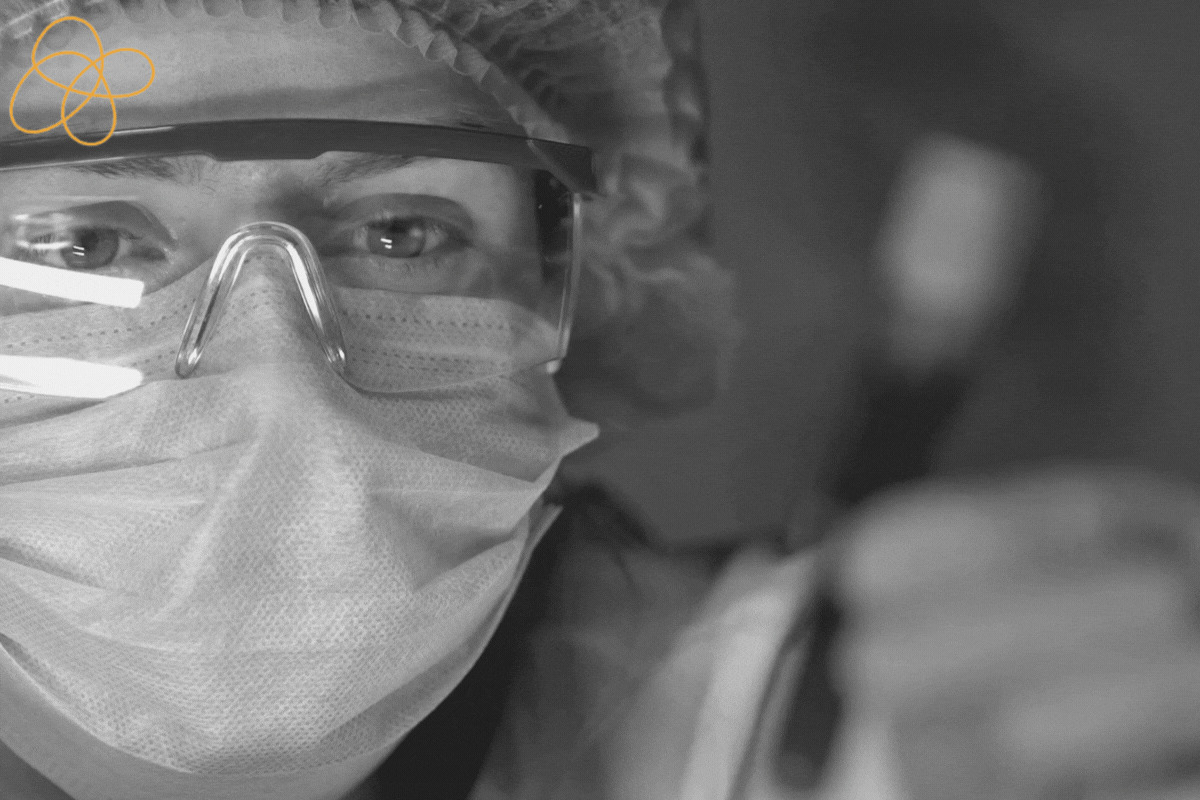Meeting Regulatory Requirements for Elemental Impurities in Drug Products: A Strategic Approach for Pharmaceutical Manufacturers
Prepare to embark on an enthralling journey of strategy and intrigue as we delve into the world of elemental impurities and uncover the secrets to meeting regulatory requirements with masterful finesse. Together, we will navigate this shadowy terrain and empower your pharmaceutical enterprise to thrive in the face of this covert threat. Welcome to the world of unmasking the hidden threats: A Strategic Guide to Elemental Impurities in Drug Products.
Unmasking the Hidden Threats: A Strategic Guide to Elemental Impurities in Drug Products
In pharmaceutical manufacturing, ensuring drug product safety and quality is paramount to maintaining patient trust and regulatory compliance. Elemental impurities, such as heavy metals, can potentially contaminate drug products and pose significant health risks to patients. Consequently, regulatory agencies worldwide have tightened their grip on monitoring and controlling these impurities in pharmaceutical products. This blog article aims to provide pharmaceutical manufacturers with an informative and cunningly strategic approach to meeting regulatory requirements for elemental impurities in drug products.
Understanding Elemental Impurities
Elemental impurities encompass a range of elements, including heavy metals like arsenic, lead, cadmium, and mercury, which may be present in raw materials, excipients, or drug product containers. These impurities can enter the manufacturing process through various sources, such as water, equipment, and atmospheric contamination. Once present in the final drug product, these elements can cause adverse effects on patients, leading to severe health consequences.
Regulatory Guidelines:
To address the issue of elemental impurities in drug products, pharmaceutical manufacturers must adhere to the guidelines set forth by regulatory agencies such as the International Council for Harmonization (ICH), the United States Pharmacopeia (USP), and the European Medicines Agency (EMA).
- ICH Q3D Guideline: The ICH Q3D guideline, “Guidance for Industry: Elemental Impurities,” outlines a risk-based approach to assess and control elemental impurities in drug products. It establishes Permitted Daily Exposure (PDE) limits for specific elements based on the route of administration and the duration of the treatment.
- USP Chapter <232> and <233>: The USP <232> and <233> chapters focus on the control of elemental impurities in pharmaceutical products. <232> provides the PDE limits for each element, while <233> deals with the analytical procedures required for testing the drug products against these limits.
- EMA Guidelines: The EMA also has specific guidelines that align with the ICH recommendations, emphasizing the need for risk assessments and implementation of appropriate controls to minimize elemental impurities in drug products.
Strategic Approach to Meeting Regulatory Requirements
- Risk Assessment: Conduct a comprehensive risk assessment to identify potential sources of elemental impurities in the manufacturing process. This assessment should include evaluating raw materials, excipients, manufacturing equipment, and packaging materials for potential contamination.
- Analytical Methodologies: Employ validated analytical methods, such as inductively coupled plasma-mass spectrometry (ICP-MS) and inductively coupled plasma-atomic emission spectrometry (ICP-AES), to accurately detect and quantify elemental impurities at or below the specified limits.
- Supplier Qualification: Collaborate closely with suppliers to ensure they meet the stringent quality standards required for elemental impurities. Regularly audit and assess their manufacturing processes and quality control procedures.
- Process Optimization: Optimize manufacturing processes to minimize the risk of elemental impurity introduction. This may involve using purified water, implementing cleanroom practices, and periodically cleaning equipment to prevent cross-contamination.
- Packaging Considerations: Evaluate packaging materials for potential elemental impurity contributions. Work with packaging suppliers to ensure they meet regulatory requirements and provide documentation of their compliance.
- Continuous Monitoring: Implement a robust monitoring program to ensure ongoing compliance with regulatory limits for elemental impurities. This may involve periodic testing of drug products and the environment to detect any potential deviations.
What are Elemental Impurities
Elemental impurities refer to trace amounts of certain elements, mainly heavy metals, that can be present in pharmaceutical products. These impurities may originate from various sources, including raw materials, excipients, manufacturing processes, and packaging materials. Elemental impurities can have adverse effects on human health when present in drug products, making their control and monitoring essential in pharmaceutical manufacturing.
When to Consider Elemental Impurities:
Elemental impurities must be considered at various stages of pharmaceutical development and manufacturing processes to ensure patient safety and regulatory compliance. Here are the key points when they need to be considered:
- Regulatory Requirements: Regulatory agencies worldwide, such as the U.S. Food and Drug Administration (FDA), the European Medicines Agency (EMA), and other national health authorities, have established guidelines for controlling elemental impurities in drug products. Compliance with these regulations is mandatory and necessitates thorough consideration of elemental impurities.
- Risk Assessment and Quality Control: During the drug development process, a risk assessment should be conducted to identify potential sources of elemental impurities. This includes assessing raw materials, excipients, and other components used in the formulation. Quality control measures must be put in place to monitor and verify the presence of elemental impurities within acceptable limits.
- Formulation and Manufacturing: Pharmaceutical manufacturers must consider elemental impurities during the formulation of drug products. This involves selecting high-quality raw materials and excipients that have low levels of impurities. Additionally, careful consideration should be given to the manufacturing processes to minimize the introduction of impurities.
- Packaging Materials: Packaging materials, such as containers and closures, can also be a source of elemental impurities. Manufacturers must evaluate and select packaging materials that meet regulatory requirements and do not contribute excessive impurities to the drug product.
- Analytical Testing: Analytical testing is crucial for determining the levels of elemental impurities present in drug products. Manufacturers should use validated and sensitive analytical methods, such as inductively coupled plasma-mass spectrometry (ICP-MS) and inductively coupled plasma-atomic emission spectrometry (ICP-AES), to accurately quantify impurities.
- Stability Studies: Stability studies over the shelf life of the drug product should include monitoring elemental impurities to ensure that they remain within acceptable limits throughout the product’s lifecycle.
- Post-Market Monitoring: Even after a drug product has been approved and is in the market, post-market monitoring should continue to assess and verify the absence of any unexpected elemental impurities or changes in their levels.
Elemental impurities in drug products can pose significant health risks to patients, making their control and monitoring an essential part of pharmaceutical manufacturing. Regulatory guidelines, risk assessments, quality control measures, analytical testing, and post-market monitoring all play crucial roles in ensuring drug products comply with the specified limits for elemental impurities. By proactively considering elemental impurities throughout the drug development and manufacturing processes, pharmaceutical companies can prioritize patient safety and comply with regulatory requirements.
Common Elemental Impurities Issues
During drug development, various issues related to elemental impurities can arise, requiring careful consideration and resolution to ensure patient safety and compliance with regulatory requirements. Here are some examples of such issues and how they were addressed:
- Contamination of Excipients: Issue: One common source of elemental impurities is the excipients used in drug formulations. Some excipients may contain trace amounts of heavy metals, which could exceed the permitted daily exposure (PDE) limits if not adequately controlled.
Resolution: To address this issue, pharmaceutical companies conduct a thorough risk assessment of excipients and work closely with excipient suppliers. They may request detailed documentation from suppliers about the elemental impurity profiles of their excipients. If potential risks are identified, the company may either find alternative excipients with lower impurity levels or implement purification processes to remove or reduce impurities.
- Elemental Impurity Migration from Containers and Closures: Issue: Drug products can interact with packaging materials, resulting in the migration of elemental impurities from containers and closures into the drug product. This can lead to an increase in impurity levels beyond acceptable limits.
Resolution: To mitigate this problem, drug manufacturers perform compatibility studies to assess the potential for elemental impurity migration. If migration is identified as a concern, they may select different packaging materials with lower impurity profiles or use coating technologies to prevent interactions between the drug product and the packaging.
- Environmental Contamination during Manufacturing: Issue: Manufacturing facilities may have contamination from atmospheric sources, process equipment, or water, leading to elevated levels of elemental impurities in the drug product.
Resolution: Manufacturers implement stringent cleaning and maintenance procedures for equipment and manufacturing areas to minimize the risk of environmental contamination. Purified water systems are utilized to ensure the absence of impurities in the manufacturing process. Additionally, regular monitoring and testing of the manufacturing environment are conducted to identify and correct any potential contamination sources.
- Trace Amounts in Raw Materials: Issue: Raw materials, including active pharmaceutical ingredients (APIs), may contain elemental impurities that need to be closely monitored and controlled. Resolution: During drug development, comprehensive testing and analysis of raw materials are performed to determine their elemental impurity profiles. Manufacturers work with suppliers to ensure that the raw materials meet established quality standards and regulatory requirements. If necessary, manufacturers may implement purification or refining processes to reduce impurity levels.
- Inadequate Analytical Methodologies: Issue: The accurate quantification of elemental impurities requires sensitive and validated analytical methods. Inadequate or unreliable analytical methodologies can lead to inaccurate results and potential compliance issues.
Resolution: Drug developers invest in state-of-the-art analytical instruments and conduct validation studies for their chosen methods, such as ICP-MS or ICP-AES. Rigorous training of analytical personnel is conducted to ensure precise and reliable measurements. Regular calibration and maintenance of instruments are performed to maintain the accuracy of the analytical data.
Elemental impurity issues during drug development can be challenging but are crucial to address for ensuring patient safety and regulatory compliance. By conducting risk assessments, implementing quality control measures, using validated analytical methodologies, collaborating with suppliers, and conducting thorough testing and monitoring, pharmaceutical companies can effectively identify and resolve elemental impurity issues throughout the drug development process. These proactive measures safeguard the quality and safety of the final drug product and bolster confidence among patients and regulatory authorities.
Conclusion
In the battle against elemental impurities, knowledge, vigilance, and strategic planning serve as the ultimate allies for pharmaceutical manufacturers. Throughout this blog article, we have unraveled the intricacies of elemental impurities, exploring the clandestine pathways through which they infiltrate drug products. Equipped with a cunningly strategic approach, we have deciphered the regulatory landscape, understanding the importance of risk assessment, analytical precision, supplier collaboration, and process optimization.
As the pharmaceutical industry continues to evolve, so do the challenges posed by elemental impurities. However, armed with the insights gained here, manufacturers stand poised to safeguard patient safety and uphold the highest standards of product quality. By weaving a web of defense against these hidden threats, we can confidently embark on the journey of drug development, knowing that the specter of elemental impurities has been masterfully addressed.
Call-out to Drug Developers
To all visionary drug developers out there, if you are treading the path of pharmaceutical innovation and encountering the enigma of elemental impurities, we extend our hand to you. As you embark on this critical journey to create life-changing therapies, we invite you to embrace the strategic approach outlined in this article. Elemental impurity concerns may be complex and shrouded in mystery, but with the right knowledge and foresight, you can transform challenges into opportunities for excellence.
Reach out to our team of experts, who stand ready to guide you through the labyrinth of regulatory requirements and empower you with the tools to detect, eliminate, and prevent elemental impurities from compromising your drug product’s integrity. Together, we will weave a seamless tapestry of quality, safety, and compliance, ensuring that your vision for a better tomorrow remains untainted by hidden threats.
Let us not merely confront these challenges; let us seize them as opportunities to elevate the pharmaceutical industry to new heights of excellence. Embrace the cunningly strategic approach to elemental impurities, and together, we will sculpt a future where patient safety reigns supreme, and our innovations stand as a beacon of trust in the realm of medicine.
Remember, the journey begins here, the path to greatness awaits. Step boldly and contact us today to unveil the secrets of strategic excellence in conquering elemental impurities. Together, we will redefine the landscape of pharmaceutical development and ensure a brighter, safer future for all.






